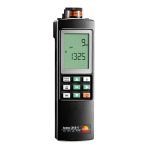In an age when the average first-world consumer can purchase a device that tracks his or her cardiovascular system in real time, it’s not surprising that enterprises are finding ways to automate common practices.
Restaurants, farmers, food distributors and producers are developing automated food safety programs, many of which are based on the Hazard Analysis and Critical Control Point (HACCP) system. Understanding how HACCP and food safety initiatives work is the first step to automating these commitments.
The HACCP system calls for continuous assessments of possible hazards
The basics of automation
In practice, HACCP-based programs are not easy to manage manually.
According to the US Food and Drug Administration, the HACCP system calls for continuous assessments of possible hazards, monitoring procedures designed to mitigate those dangers and verifying that departments, employees and other participants have taken corrective actions.
The difficult nature of maintaining a reliable food safety program has prompted enterprises to automate the processes associated with such endeavours. To be clear, automation does not entail miniature, flying robots inspecting food for defects. Instead, automation involves using the technology at a company’s disposal to efficiently execute HACCP responsibilities.
What assets should businesses use?
Tablets, cooking oil testers, cloud-based software and other technologies provide the framework businesses need to automate their food safety programs.
 Cloud tools allow you to automate HACCP programs.
Cloud tools allow you to automate HACCP programs.SafetyChain Software Senior Vice President of Marketing and Customer Community Barbara Levin and SafetyChain Software Vice President of Food Safety and Quality Applications Dan Bernkopf wrote a piece for Food Quality and Safety about food safety program automation. The two authors maintained that cloud-hosted applications can serve as:
- Repositories of hazard assessment and mitigation data
- Platforms through which companies can share information with food safety authorities
- Programs that send non-compliance notifications to the appropriate parties
In order for these solutions to operate well, they require consistent input and usage from personnel across the food supply chain. Even some platforms are dedicated to specific sectors within the food industry.
For example, Poultry Management Systems (PMSI) developed Command III, which monitors critical control points and facility conditions at chicken farms.
Assembling the key components
The various devices and software that enable businesses to automate HACCP-based initiatives must operate in concert with one another. For example, when staff use food temperature measuring instruments, they should log the data into tablets to keep a record of good practices.
As a whole, automation requires participation among all stakeholders and easy-to-use technology.









 Reduce cooking oil costs while ensuring quality
Reduce cooking oil costs while ensuring quality Expert knowledge on CO2 monitoring
Expert knowledge on CO2 monitoring Refrigeration knowledge - in 3 modules
Refrigeration knowledge - in 3 modules



